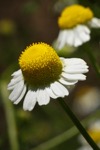Notice (8): Undefined index: geoplugin_countryCode [APP/Controller/AppController.php, line 94]Code Context$Country_code = '';if($ip_data && $ip_data['geoplugin_countryCode'] != null) {$Country_code = $ip_data['geoplugin_countryCode'];$client = null $forward = null $remote = '216.73.216.37' $ip = '216.73.216.37' $ch = unknown $ip_data_in = '{ "geoplugin_status":429, "geoplugin_message": "Blacklisted due to sending too many requests to geoplugin.net. Consider whitelisting your IP or domain", "geoplugin_url": "https://www.geoplugin.com/premium/" } ' $ip_data = [ 'geoplugin_status' => '429', 'geoplugin_message' => 'Blacklisted due to sending too many requests to geoplugin.net. Consider whitelisting your IP or domain', 'geoplugin_url' => 'https://www.geoplugin.com/premium/' ] $Country_code = ''App\Controller\AppController::initialize() - APP/Controller/AppController.php, line 94 App\Controller\ProductsController::initialize() - APP/Controller/ProductsController.php, line 31 Cake\Controller\Controller::__construct() - CORE/src/Controller/Controller.php, line 273 ReflectionClass::newInstance() - [internal], line ?? Cake\Http\ControllerFactory::create() - CORE/src/Http/ControllerFactory.php, line 47 Cake\Http\ActionDispatcher::dispatch() - CORE/src/Http/ActionDispatcher.php, line 91 Cake\Http\BaseApplication::__invoke() - CORE/src/Http/BaseApplication.php, line 235 Cake\Http\Runner::__invoke() - CORE/src/Http/Runner.php, line 65 Cake\Http\Runner::__invoke() - CORE/src/Http/Runner.php, line 65 Cake\Http\Middleware\CsrfProtectionMiddleware::__invoke() - CORE/src/Http/Middleware/CsrfProtectionMiddleware.php, line 108 Cake\Http\Runner::__invoke() - CORE/src/Http/Runner.php, line 65 Cake\Http\Runner::run() - CORE/src/Http/Runner.php, line 51 Cake\Routing\Middleware\RoutingMiddleware::__invoke() - CORE/src/Routing/Middleware/RoutingMiddleware.php, line 168 Cake\Http\Runner::__invoke() - CORE/src/Http/Runner.php, line 65 Cake\Routing\Middleware\AssetMiddleware::__invoke() - CORE/src/Routing/Middleware/AssetMiddleware.php, line 88 Cake\Http\Runner::__invoke() - CORE/src/Http/Runner.php, line 65 Cake\Error\Middleware\ErrorHandlerMiddleware::__invoke() - CORE/src/Error/Middleware/ErrorHandlerMiddleware.php, line 96
| Scientific: | Matricaria recutita |
|---|---|
| Other: | Chamomile (German ) |
| Family: | Asteraceae |
| Synonym: | Chamomilla recutita |
Chamomile is one of the most important herbs in traditional western herbalism. It has many medicinal uses but it is revered in the German herbal tradition primarily for its ability to soothe digestive disorders. It is very safe and often recommended for children suffering from colic. Research shows chamomile combined with apple pectin is safe and effective for diarrhea in children.
Its vulnerary action makes it useful to internal issues like inflammation of the mucous membranes (e.g. gastritis, stomach ulcers) and also externally for skin conditions (e.g. eczema, dermatitis). It has antispasmodic properties, making it ideal for treating cramping pains in the digestive tract (e.g. indigestion, colic and gas) and also menstrual cramps.
Chamomile tea is historically consumed for its calming effects and modern research supports this. It acts as a mild sedative to help people relax and promote restful sleep. Research also suggests that chamomile may have a modest effect on anxiety.
Modern research shows chamomile improves blood sugar and cholesterol levels in type 2 diabetes.
Gastrointestinal
• inflammatory conditions associated with burning and cramping:
• gastric ulcer
• gastritis
• colic
• dyspepsia
• apthous ulcers
• hemorrhoids
• irritable bowel syndrome (IBS)
• oral mucositis induced by chemotherapy
• oral lichen planus
• children’s diarrhea (combined with apple pectin)
• motion sickness
CNS
• mild sedative for overstimulated states
• insomnia
• anxiety
• attention deficit hyperactivity disorder (ADHD)
• depression
Dermatologic (topically)
• irriation to skin (dermatitis)
• eczema
• ulcers
• burns
• acne rosacea
Gynecological
• menstrual pains (dysmenorrhea)
• premenstrual syndrome (PMS) for emotional symptoms
• breast pain (mastalgia)
Cardiovascular
• hypercholesterolemia
• atherosclerosis
Metabolic
• type II diabetes
• diabetic nephropathy
• gout
• Carminative
• Antispasmodic
• Antiemetic
• Nervine
• Vulnerary
• Antiinflammatory
• Antiulcerogenic
• Gastroprotective
• Antiseptic
• Antiemetic
• Antiallergic
• Bitter
• Antidiabetic
• Sesquiterpenes (Chamazulene)
• Sesquiterpene Lactones
• Volatile Oils ( α -Bisabolol)
• Flavonoids
• Coumarins
• Tincture (1:5 in 40% EtOH): 1-4 ml tid
• Liquid extract (1:1 in 45% EtOH): 1-4 ml tid
• Infusion: (dried herb): 1-2 tsp tid-qid
• Cream (3-10%): as needed
• Generally considered safe when used as indicated.
Contra-Indications:
• Asteraceae allergy: contains sesquiterpene lactones
Pregnancy & Lactation:
• Unsure. Probably safe.
- Iron supplements • may reduce the absorption of non-heme iron. Take iron supplements a few hours apart.
Barnes J, Anderson LA, Phillipson JD. Herbal Medicines, 3rd ed. London: Pharmaceutical Press, 2007.
Bone K. Principles and Practice of Phytotherapy. Edinburgh: Churchill Livingstone, 2000.
Bone K. A Clinical Guide to Blending Liquid Herbs: Herbal Formulations for the Individual Patient. St Louis, MO: Churchill Livingstone, 2003.
Brinker F. The Toxicology of Botanical Medicines, 3rd ed. Sandy, Oregon: Eclectic Medical Publications, 2000.
Felter HW, Lloyd JU. King's American Dispensatory. 1898. http://www.ibiblio.org/herbmed/eclectic/kings/main.html. Accessed: August 19, 2006.
Hoffman D. Medical Herbalism. Rochester, Vermont: Healing Arts Press, 2003.
Weiss RF. Herbal Medicine. Beaconsfield, England: Beaconsfield Publishers Ltd, 1988.
Williamson EM, ed. Major Herbs of Ayurveda. Edinburgh: Churchill Livingstone, 2002
Disclaimer: This content is subject to change. The information is intended to inform and educate; it does not replace the medical evaluation, advice, diagnosis or treatment by a healthcare professional. www.nhpassist.com © 2014 NDAssist Inc. and/or its affiliates. All rights reserved.

|
Chamomile (German )
SummaryChamomile is one of the most important herbs in traditional western herbalism. It has many medicinal uses but it is revered in the German herbal tradition primarily for its ability to soothe digestive disorders. It is very safe and often recommended for children suffering from colic. Research shows chamomile combined with apple pectin is safe and effective for diarrhea in children. IndicationsSign in requiredActionsSign in requiredConstituentsSign in requiredPosologySign in requiredSafetySign in requiredInteractionsSign in requiredReferencesSign in required |
|---|